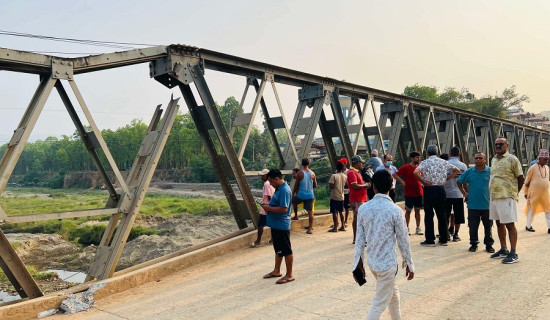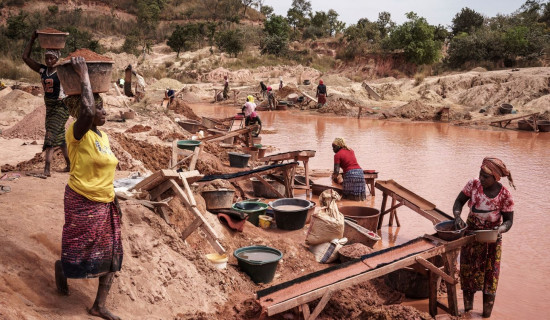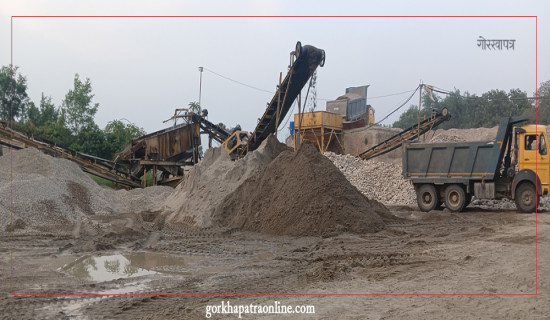- Wednesday, 14 May 2025
Monsoon preparedness of Kathmandu under scrutiny
By A Staff Reporter,Kathmandu, May 14: As the pre-monsoon season is now progressing and the monsoon is expected to begin next month, concerns are mounting over lackluster preparedness to mitigate monsoon-induced disasters.
Alarmingly, disaster preparedness appears sluggish and inadequate in the Kathmandu Valley despite the growing threat of floods, landslides and inundations. These concerns were starkly highlighted at a stakeholder engagement programme held in Kathmandu on Tuesday, where disaster management officials revealed a troubling fact: the capital city currently has only ‘one rescue raft’ readily available for emergency flood response.
This revelation underscores the city's critical shortfall in emergency response capacity and raises significant questions about the state of monsoon preparedness in the country’s urban centres.
Stakeholders speaking at the interaction programme organised by the Kathmandu District Coordination Committee admitted that although approximately 600 inflatable rescue boats would be ideal for the Kathmandu Valley during the monsoon, even ensuring the availability of 30 to 40 boats during an emergency remains a major challenge. In practice, officials noted, none may be immediately deployable when disaster strikes.
Shiva Adhikari, president of Nepal Association of Rafting Agencies (NARA), said that the association has regularly been supporting the government with raft boats and rescue teams during the monsoon.
“Each year, the government turns to us for rescue equipment and support. We have been stepping in to bridge the gap, but this reliance is not sustainable,” he said. We have over 600 skill rafters in Nepal and abroad, but the government has not owned up our support so freely and openly. “We are ready to assist the government in both service and producing skilled raft rescuers as we have trained manpower from abroad,” he said.
According to data shared by Nepal Police at the function, eleven local governments within the Kathmandu Valley face elevated flood risk, with the most
vulnerable areas including Ward No. 9 of Tokha Municipality, Ward No. 12 of Chandragiri Municipality, Ward Nos. 2, 4, and 10 of Kirtipur, Ward Nos. 7 and 9 of Kageshwori Manohara, and Ward No. 14 of Kathmandu Metropolitan City, especially the Balkhu region and the Bishnumati Corridor.
Superintendent of Police of the Kathmandu District Police Range, Apil Raj Bohora, said that the areas facing high landslide risk, include – Chandragiri Municipality-1, Budhanilkantha-5, and Ward Nos. 1, 2, 3, and 7 of Tarkeshwor Municipality, as well as Ward Nos. 7 and 32 of Kathmandu Metropolitan City.
However, despite the gravity of the risks discussed, no representatives from the most affected municipalities attended the programme—an absence described as ‘regrettable’ by SP Bohora.
Newly elected Kirtipur Municipality’s Mayor Krishna Man Dangol acknowledged that while the municipality has historically been perceived as low-risk zone from any natural disaster, recent years have seen a rise in both landslides and localised flooding. He assured that the local government has started allocating dedicated budget lines and implementing DRR strategies to address this evolving threat landscape.
Chief District Officer of Kathmandu, Rishiram Tiwari, echoed these concerns, warning that unless all three tiers of government—federal, provincial, and local—coordinate and commit to a shared disaster preparedness framework, the capital could suffer significant human and economic losses during future disasters. He stressed that despite limited resources, the government has continued to prioritise proactive risk reduction efforts.
Santosh Budhathoki, Chief of the District Coordination Committee for Kathmandu, criticised the lack of effective inter-governmental coordination. While programmes for disaster risk reduction and mitigation have been initiated at the district level, many local bodies have failed to provide adequate support or follow through on implementation. He announced plans to form monitoring teams to assess the state of preparedness across municipalities before the monsoon arrives.



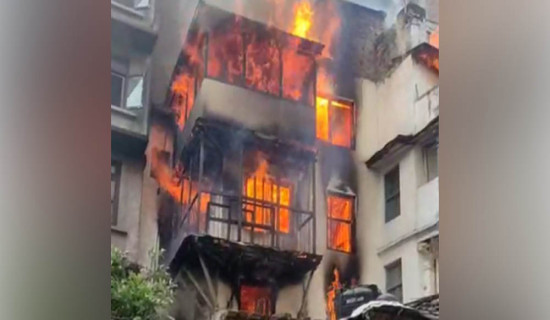

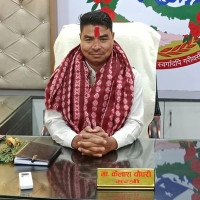
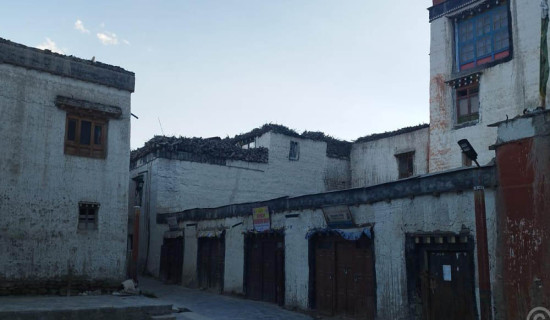
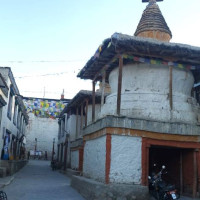
-square-thumb.jpg)


